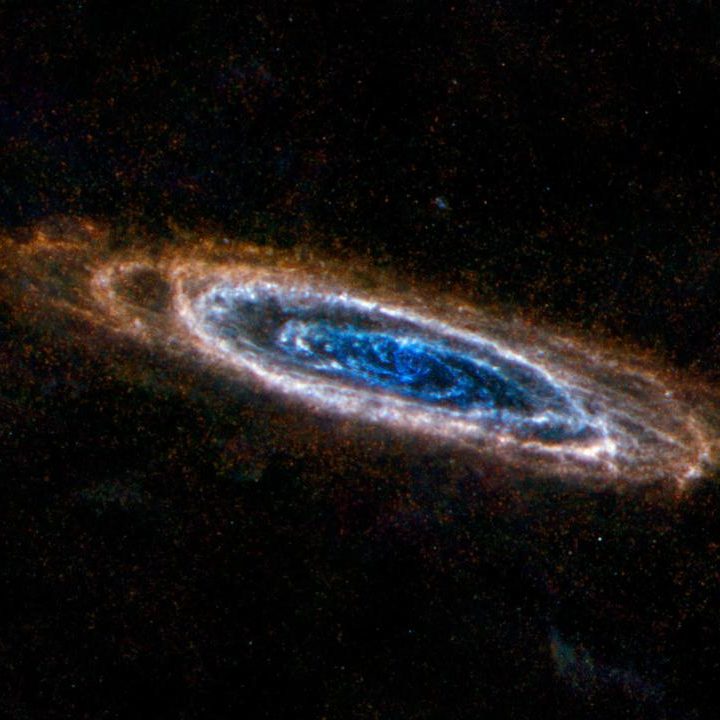
Image Credit: NASA
The arrival of fall signals the return of the Andromeda Galaxy to our early evening skies. This popular astronomical feature is one of the most distant objects visible with the naked eye and played a significant role in unraveling the expanding nature of the universe.
The Andromeda Galaxy, also known as M31, is a spiral galaxy like our Milky Way. This type of galaxy features a bulge of stars that forms the central portion of a disc of stars, dust, and gas. This disc is arranged into a pattern of spiral arms, locations of star formation.
The age of the Andromeda Galaxy is uncertain, with recent estimates ranging from five to 10 billion years old. It contains perhaps one trillion stars, well more than the estimated 300 billion of the Milky Way, and has at least 19 satellite galaxies orbiting it.
The Andromeda Galaxy is the largest member of the Local Group, a cluster of about 30 galaxies that are gravitationally bound to one another. The Local Group also includes the Milky Way but consists mostly of small, faint galaxies known as dwarfs. At a distance of 2.5 million light years, M31 is the 33rd known closest galaxy to the Milky Way.

Amazing Andromeda in Red Image Credit: NASA
The earliest known recorded observations of the Andromeda Galaxy date to 964 AD and were made by Persian sky watchers. German astronomer Simon Marius recorded the first-known telescopic observations of it in 1612, just three years after Galileo heralded in the era of astronomical observations through telescopes. Three centuries later, V.M. Slipher incorporated observations of M31 in his classic radial velocity research. Radial velocity is the relative speed of an object along the line of sight between an observer and the object. Slipher discovered that the Andromeda had a higher radial velocity than any other known object at the time. Today, we know that the Andromeda and Milky Way galaxies are approaching each other at about 110 kilometers per second (68 miles per second – more than twice the speed of an average meteor shooting across the sky.) Scientists expect them to collide in about four billion years, eventually merging to form a giant elliptical galaxy.

Hubble’s High-Definition Panoramic View of the Andromeda Galaxy Image Credit: NASA
To find the Andromeda Galaxy, first look for the Great Square of Pegasus. In the eastern skies just after sunset, you will see four stars that, if connected by imaginary lines, form a square. The square will be tipped and standing on one of its corners. To some observers, the square resembles a baseball diamond. Using this analogy, look at the star representing the third base. Extending down and to its left is a collection of six paired stars that resembles a cornucopia. These stars are the brighter members of the constellation Andromeda and loosely form three pairs, with each pair further apart, thus forming the v-shape of the cornucopia. Just above and to the right of the second pair is the Andromeda Galaxy, appearing as a faint, fuzzy dot.
Averted vision – not looking directly at the object, but instead using your peripheral vision to observe it – allows you the best chance of seeing the Andromeda Galaxy. Through binoculars, you will be able to distinguish this object as a fuzzy patch of light. Even then, our eyes cannot fully appreciate this celestial wonder. The angular size of Andromeda in the sky is enormous – six times the diameter of the full Moon – but our eyes would have to be able to take a timed exposure for this to be apparent.
The Andromeda Galaxy will be visible for the next several months and is worth taking the time to spot through a telescope, binoculars, or even with the unaided eye. When you do, try to imagine the true apparent size of our colossal cosmic neighbor.